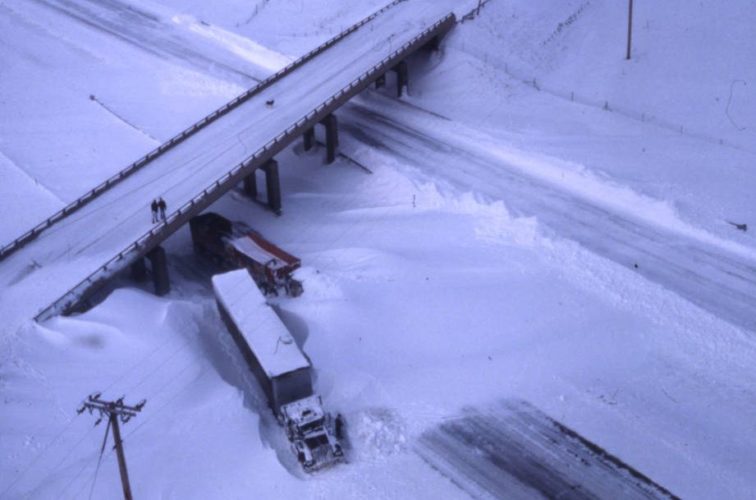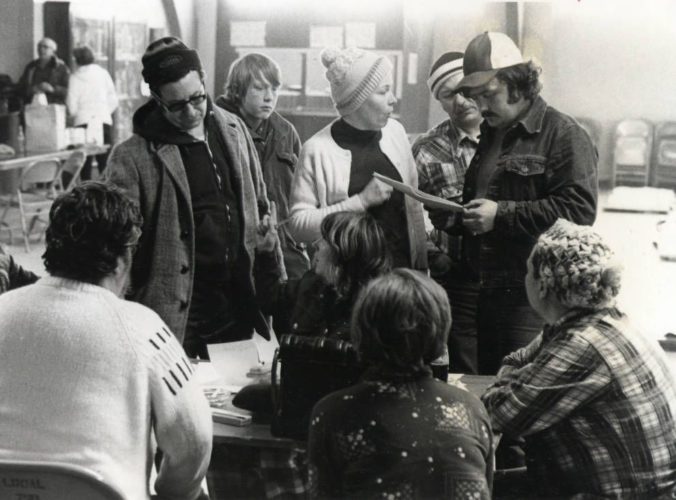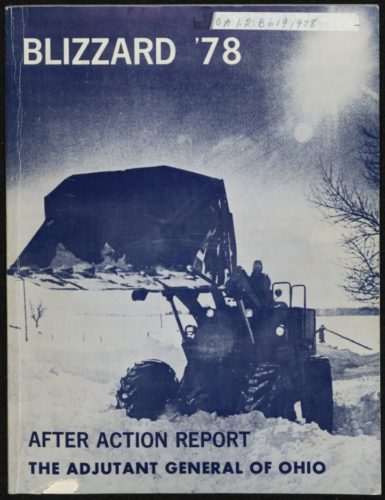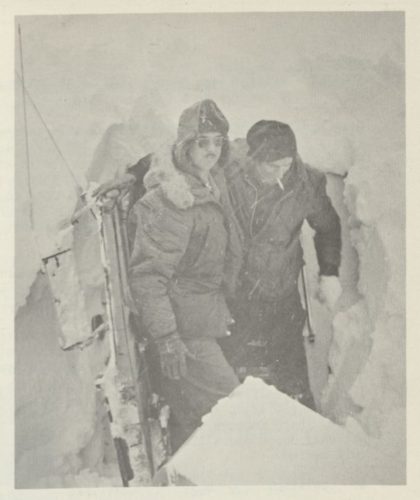40 Years Later: The Blizzard of ’78

Ohio has gotten a season’s worth of snow over the last couple weeks, with teeth-chattering temperatures to match. Many years, this is par for the winter course in our state–but this coming week marks the 40th anniversary of a winter storm the likes of which Ohioans who experienced it will never forget. According to the National Weather Service, a rare “severe blizzard,” the most extreme category of winter storm, is characterized by winds of 45 miles per hour or greater, low visibility due to densely falling or blowing snow, and temperatures of 10 degrees or less. Conditions during the 1978 storm met and exceeded all of these measures, in what is still remembered as the worst blizzard to ever hit Ohio.

Beginning early in the morning of January 26th, 1978, a snowstorm resulting from the merging of two low-pressure systems moved across the Midwest and into Ohio, bringing with it high winds, low temperatures and heavy snow that accumulated to between one and three feet across the state over two days. Temperatures were already close to zero, and with near-hurricane strength winds averaging between 50 and 70 miles per hour, the cold turned deadly.Atmospheric pressure fell to 28.28 inches at Cleveland as the center of the blizzard crossed Ohio–the lowest ever recorded in the state–and temperatures with the wind chill reached 60 degrees below zero. These conditions, compounded by the heavy snowfall and the already-deep snow on the ground from earlier in the month, caused extreme blizzard conditions all across Ohio. Enormous snowdrifts as deep as 25 feet in places covered cars and houses, blocked highways and railways, and closed all airports for two days.

The effect of the storm on the state and its residents was, according to the “Blizzard ’78 After Action Report” issued in March 1978 by the Ohio Adjutant General, comparable “to a statewide nuclear attack from an immobilization standpoint.” Transportation, business, industry, and schools ground to a halt for two days, and thousands of Ohioans were stranded in their cars and in their homes by the deepening snowdrifts–sometimes without electricity or heat. For the first time in its history, the entire Ohio Turnpike closed due to the blizzard’s severity.
More than 5,000 members of the Ohio National Guard were called to duty, and spent long hours clearing roads, assisting utility crews, rescuing stranded residents and motorists, and transporting doctors and nurses to hospitals. National Guard helicopters flew a total of 2,700 missions across Ohio rescuing thousands of Ohioans, many in dire medical emergencies, and National Guard armories were ordered to house and shelter local citizens who couldn’t remain at home–over 1,300 the first night!
Thousands of civilian volunteers with snowmobiles and four-wheel drive vehicles also responded to a general call from the Governor’s Office to help rescue stranded motorists, transport doctors and nurses and deliver food and fuel to areas where it was needed. According to the report, the civilian volunteer response was great enough that armory phones lines were “so busy that operations were stalled and at one point nearly stopped due to inability to complete other type calls.”

The “Blizzard ’78” report provides an excellent overview of the massive scope of government, military and civilian effort during the disaster, including logistical operations, specific conditions around the state, and lessons learned for future disaster response. Included in the report is the story of a Cleveland truck driver named James Truly, seen at right, who was rescued after five and a half days trapped in his truck cab beneath a 20-foot drift of snow.
Ohio Memory captures just a sampling of the many stories resulting from the 1978 Blizzard, in addition to the official report of the Adjutant General. You can read about the ways communities pulled together during the emergency in the Ohio Jewish Chronicle, North Canton Sun, and Amherst News-Times, and see the blizzard featured in McComb High School’s “Reflections of 1978” yearbook. View images during and after the blizzard from the Ohio Turnpike Commission and Marion County Historical Society, and hear from retired Brigadier General Robert Lawson, who served as Ohio National Guard Chief of Staff during the blizzard in 1978, in his own words.
Despite the hard work of civilian and military efforts, the storm did have tragic and lasting effects for many Ohioans. The death toll for the storm reached more than 70 across the region, with the majority (51) in Ohio, making it one of the deadliest winter storms in the state’s history. Approximately two thousand homes were destroyed, and the blizzard caused more than one billion dollars in damage across the state. But Ohio and its residents came through the storm unbowed, and many Ohioans still recall and share stories of the tremendous impact that this remarkable event had as we look back, 40 years later.
Thanks to Lily Birkhimer, Digital Projects Coordinator at the Ohio History Connection, for this week’s post!



Leave a Reply
You must be logged in to post a comment.